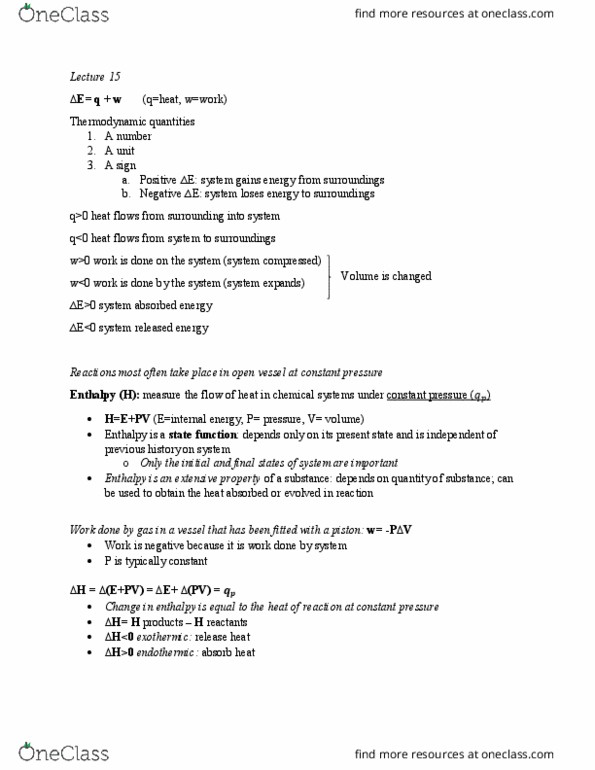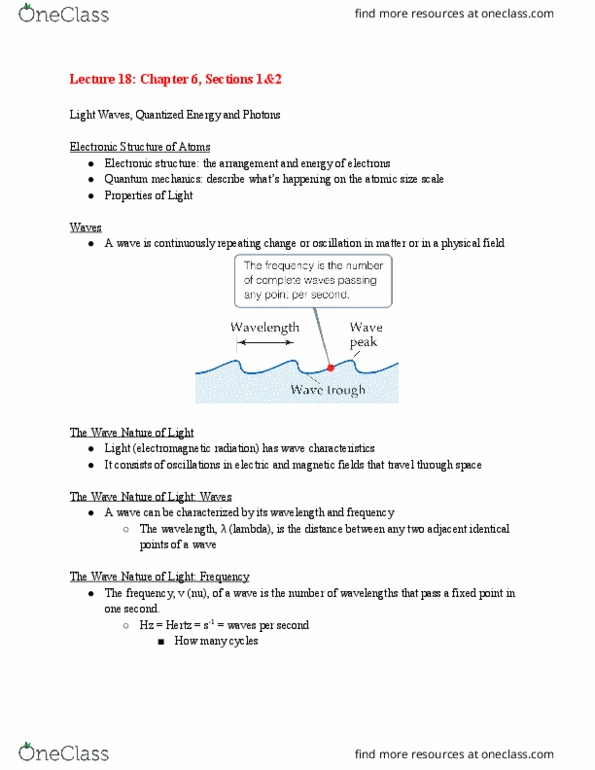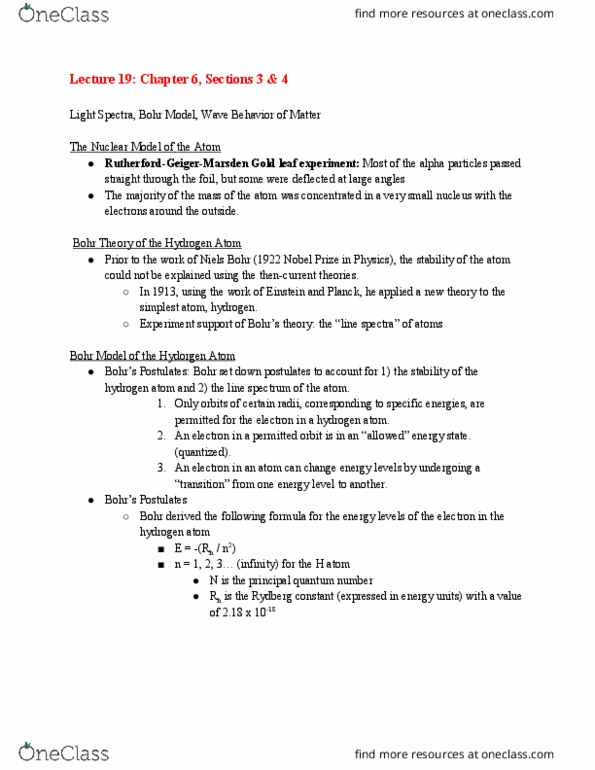CHE 106 Lecture Notes - Lecture 18: Electromagnetic Spectrum, Quantum Mechanics, Photon
CHE 106 verified notes
18/42View all
Document Summary
Electronic structure: the arrangement and energy of electrons. Quantum mechanics: describe what"s happening on the atomic size scale. A wave is continuously repeating change or oscillation in matter or in a physical field. It consists of oscillations in electric and magnetic fields that travel through space. A wave can be characterized by its wavelength and frequency. The wavelength, (lambda), is the distance between any two adjacent identical points of a wave. The frequency, v (nu), of a wave is the number of wavelengths that pass a fixed point in one second. Hz = hertz = s -1 = waves per second. Multiplying the frequency, v (waves / second) and the wavelength, (m / waves) of a light wave gives the speed of the wave in m/s. In a vacuum, the speed of light, c, is a constant (3. 0 x 10 8 m/s) Therefore, given the frequency of light, its wavelength can be calculated, or vice versa.




